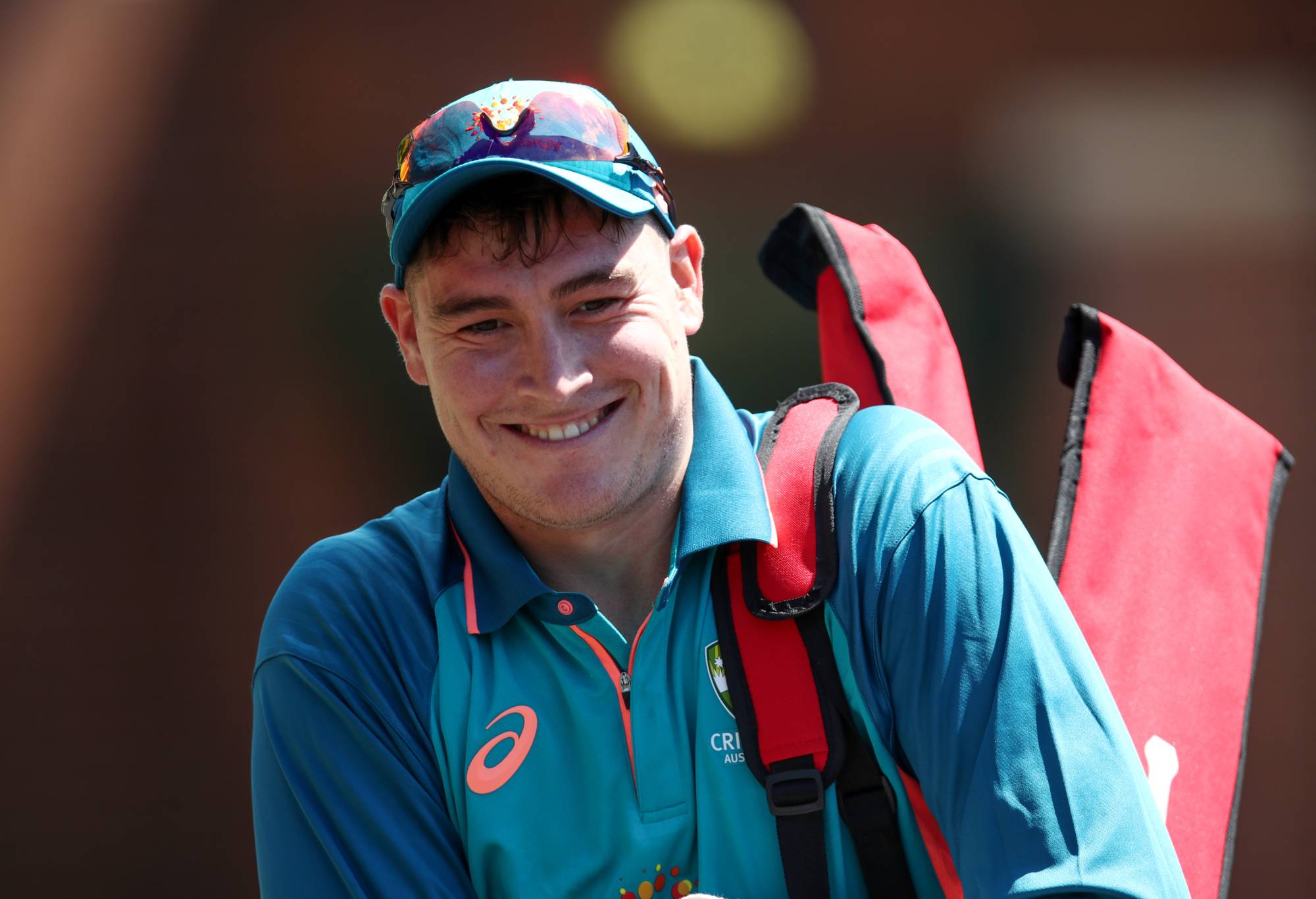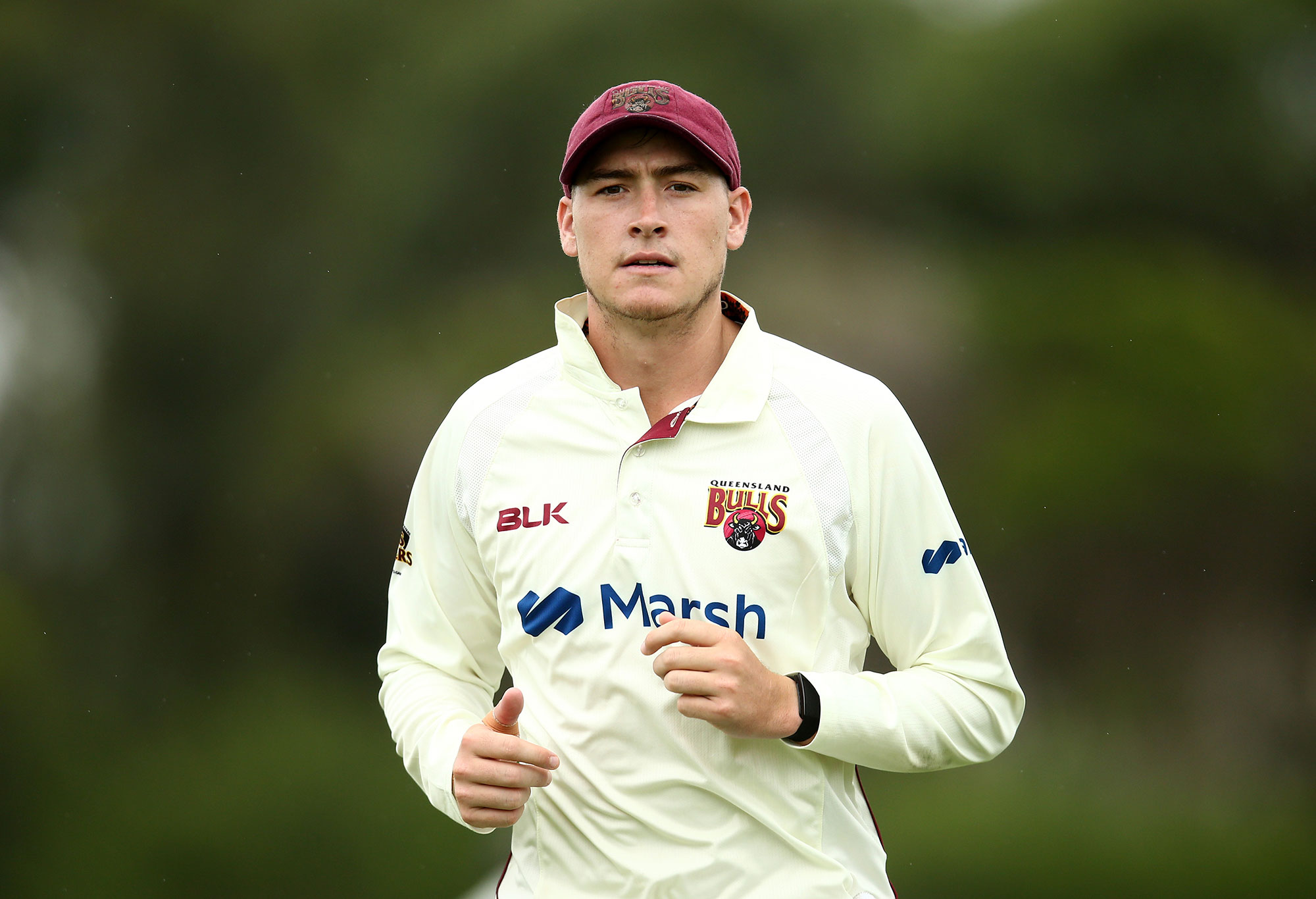Six years after Matthew Renshaw batted and batted against Pakistan the big Queenslander is back.
Out of the blue, the left-hander, who looked like he had the world at his feet when he peeled off a marvellous 184 against Pakistan in the New Year’s Test, is set to make his comeback to Test cricket at the Sydney Cricket Ground.
Surprising, yes. Proactive, indeed.
With David Warner and Usman Khawaja both 36, Australian selectors should be establishing whom the next cab off the rank is regarding their openers.
A glance overseas reiterates the importance of having a reliable opener capable of batting long periods, with England and South Africa both struggling to find a man at the top to replace the likes of Alastair Cook and Graeme Smith respectively.
Back in Australia, a number of players are starting to emerge at state level.
CLICK HERE for a seven-day free trial to watch international cricket on KAYO
Will Pucovski, of course, remains a standout but his future is clouded, with concussions derailing one of the most exciting careers since Ricky Ponting emerged out of Launceston.

Matt Renshaw. (Photo by Jason McCawley/Getty Images)
Marcus Harris remains part of the wider Australian set-up. But at 30, the Victorian’s first-class average of 39.49 probably reflects where his Test average hovers (25.29).
When Matthew Hayden was dropped, the Queenslander dominated Sheffield Shield cricket year in and year out. Ditto Darren Lehmann, Matthew Elliott and Greg Blewett.
Others like Jimmy Maher and Michael Di Venuto didn’t even get a look in, while Stuart Law scored a half-century and wasn’t sighted again.
Harris needs to bang the door down to be given another go in the same manner that Simon Katich and Chris Rogers did.
Tim Ward and Henry Hunt have shown glimpses of what they are capable of with first-class centuries. Both are in their mid-20s but neither average over 39, with Ward on 38.92 across 15 first-class matches while South Australian Hunt is at 35.77.
That doesn’t necessarily rule them out. After all, Marnus Labuschagne’s first-class average was in the low 30s before he was given a go. But Labuschagne had a technique that was solid; a low back lift and still head.
In Renshaw, Australian cricket has a man with the fundamentals of the game in place. Two months shy of his 27th birthday, history suggests Renshaw is coming into his prime.
He leaves the ball better than most and he has the ability to bat long periods of time. His huge century during the 2017 New Year’s Test was one that had many pundits expecting greatness.
But, as was the case of Hayden and Justin Langer who rose to the summit of the game after a number of false starts, openers often follow unique paths to the top.
Importantly, too, Renshaw has scored runs in India. In his first two Tests in the subcontinent in 2017 he made a pair of 60s. One Test later he scored 45.
Those aren’t earth-shattering numbers, but compared to most Australian batters, including David Warner who averages 24.25 in India, Renshaw’s average of 29 from four Tests doesn’t tell the full story.
Renshaw will likely bat in the middle-order for Australia upon his return. He did so successfully for Queensland during the 2020-21 season, where he made 500 runs at 62.50.
The ability to bat throughout the order is another feather in Renshaw’s cap. One criticism of Renshaw was that he struggled to have different gears to his batting.
It’s understood Warner was left frustrated at times by Renshaw’s strike-rate, which is 42.48. But, according to Pat Cummins, Twenty20 cricket has helped expand the left-hander’s game.
“He’s become a new father as well in the last few weeks, which makes you grow up pretty quickly,” Cummins said of Renshaw, who moved back to the top of the order for Queensland this season.

Matt Renshaw. (Photo by Jason McCawley/Getty Images)
“It’s a common trend. It always has been. Later into your twenties you’re a better batter than when you were starting out.
“Credit to him, he got his chance to debut in his early 20s which is a fantastic effort, he’s gone away and scored plenty of runs – you just learn your game better, you learn what works for you.
“Even T20 – the introduction of reverse sweeps and how to play spin differently. He just looks like he’s got more tools in his armoury than he did five or six years ago.”
By introducing Renshaw back into the Test side, Australian selectors, headed by chairman George Bailey, are showing a proactiveness that has defined their tenures.
With the series wrapped up against the Proteas, a challenging year of Test cricket ahead, with tours of India and England to come, and aging openers, Renshaw’s selection was by no means the obvious one but could prove to be the right one moving forward.
>Cricket News

%20(3).jpeg)




0 Comments